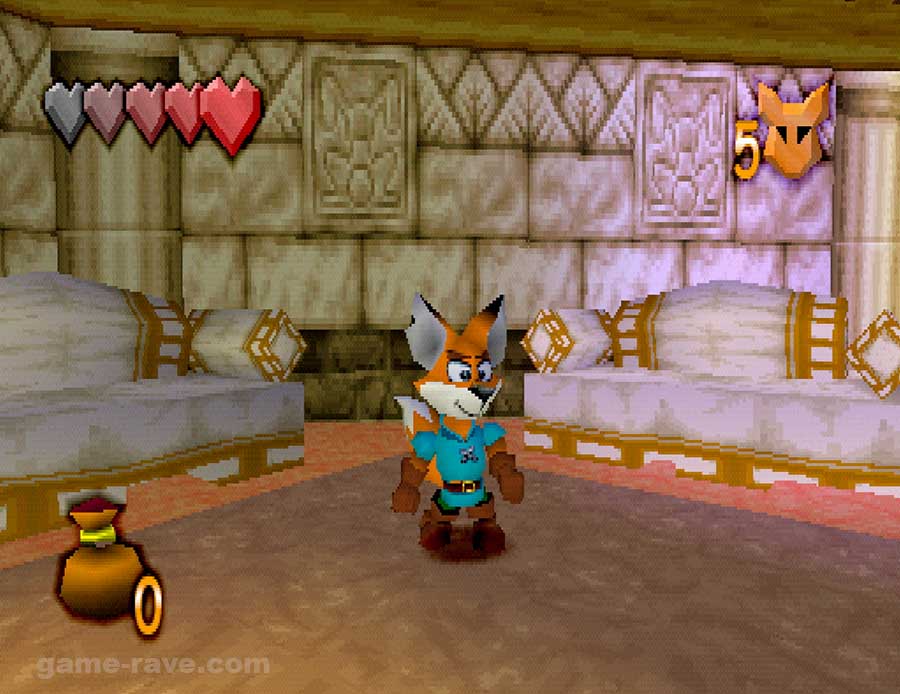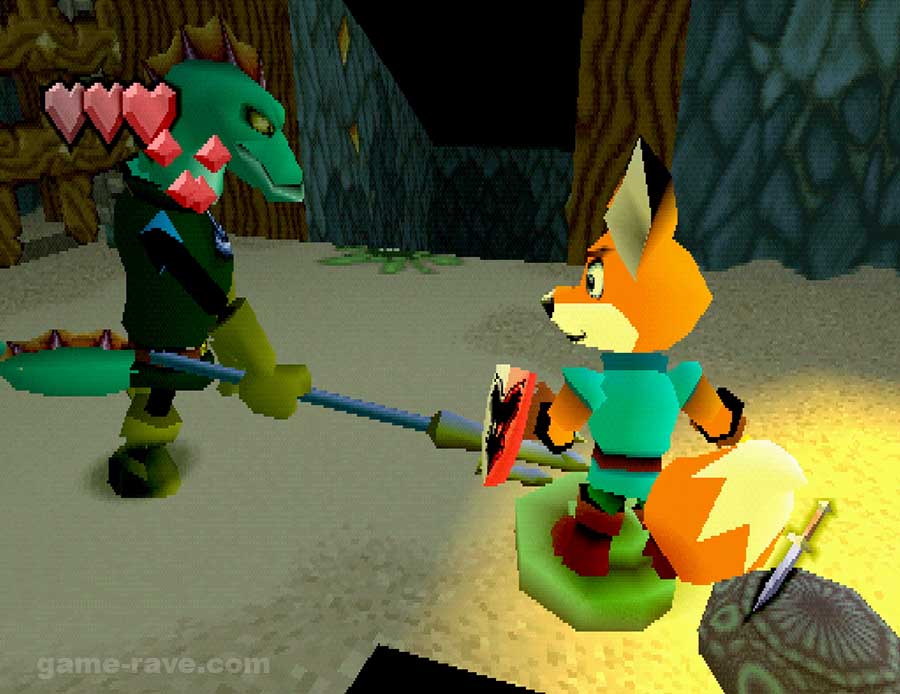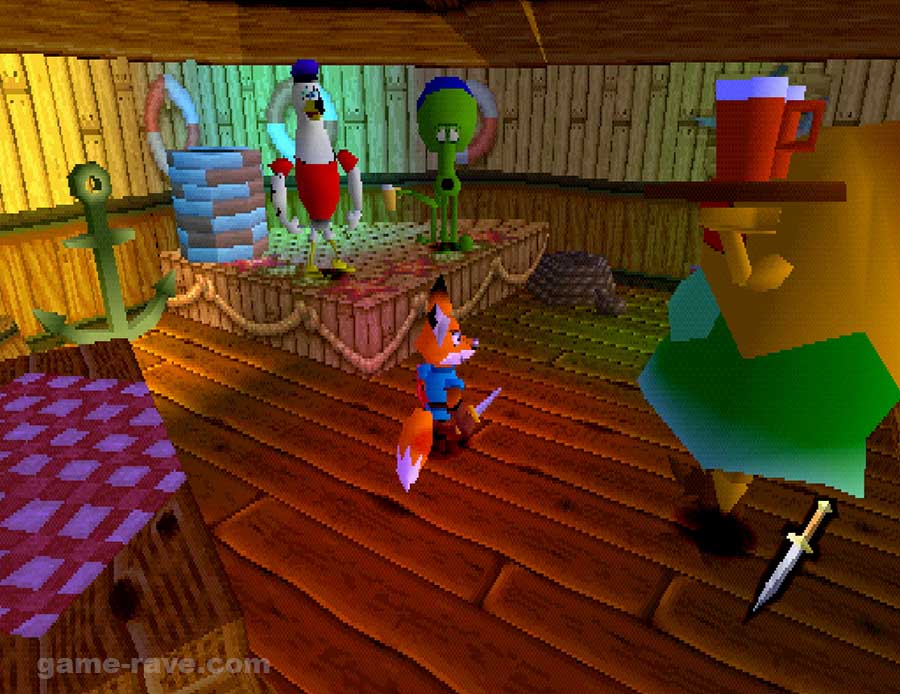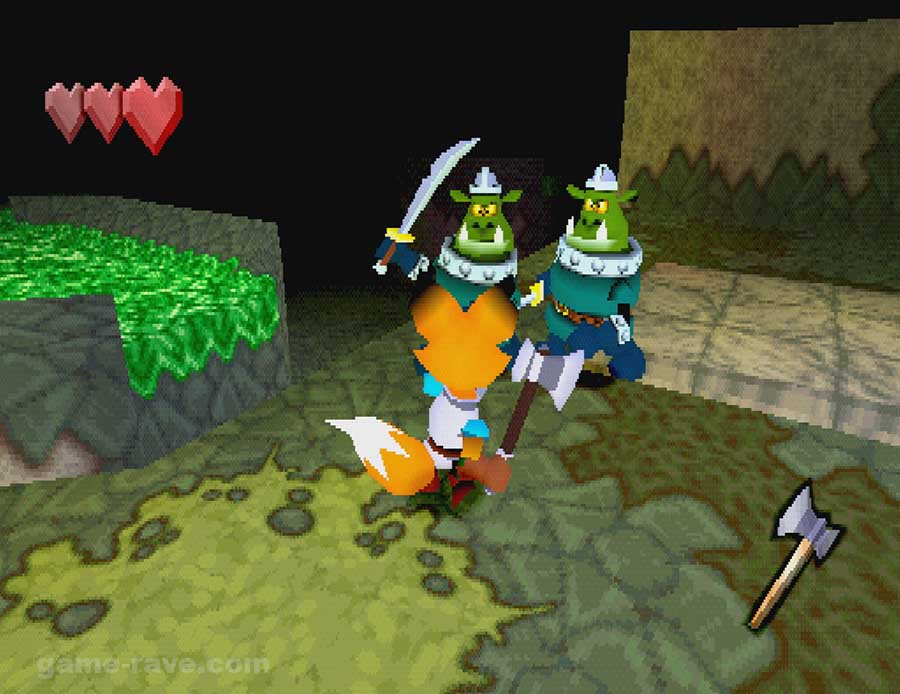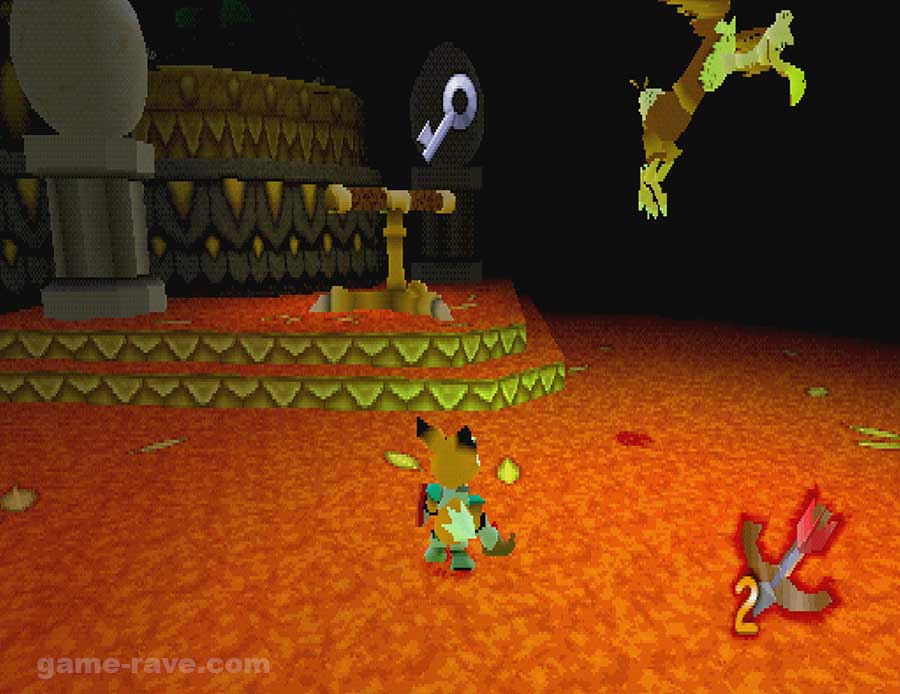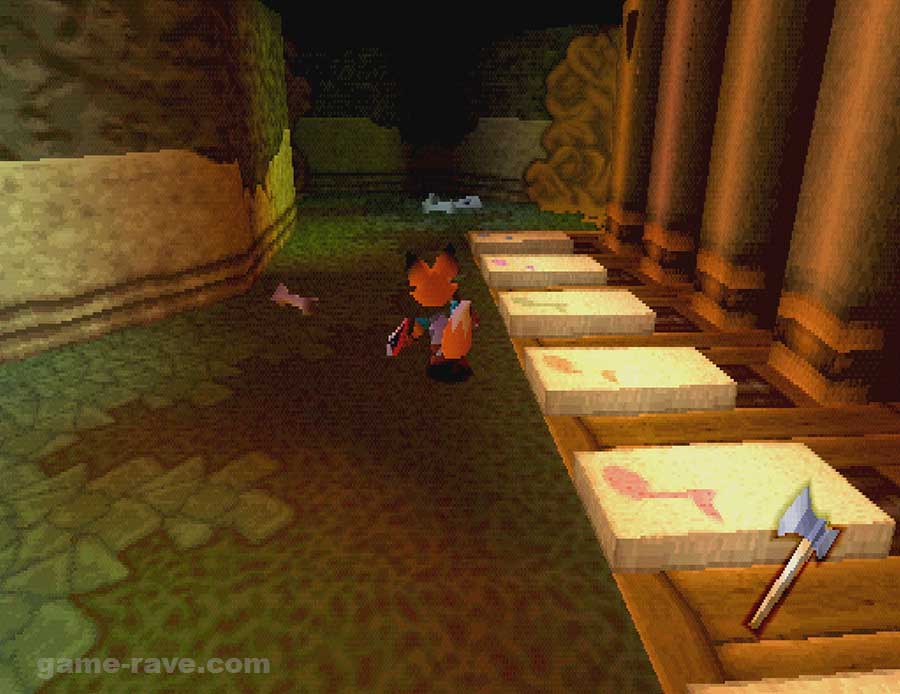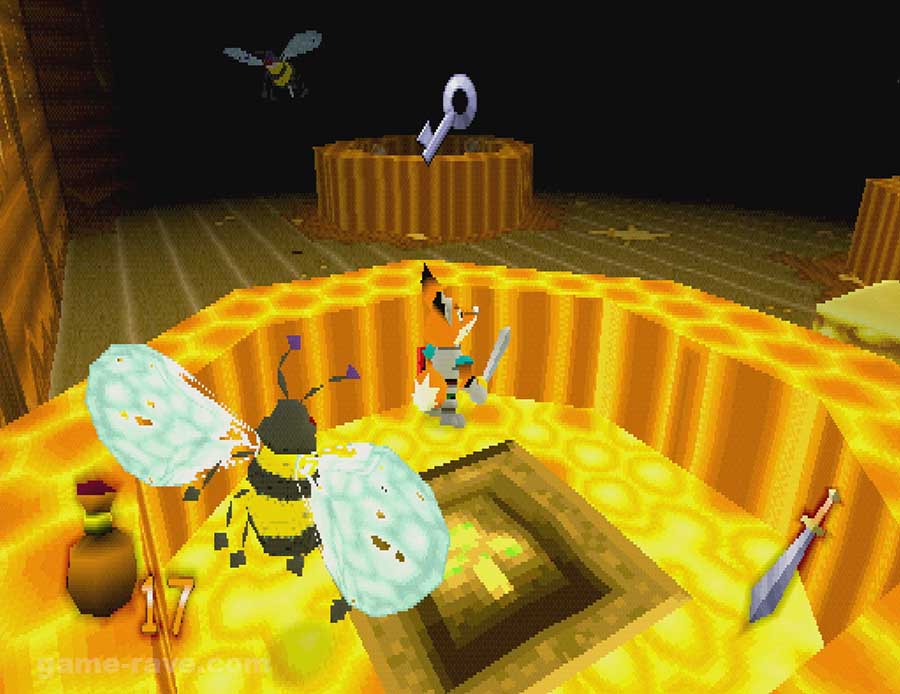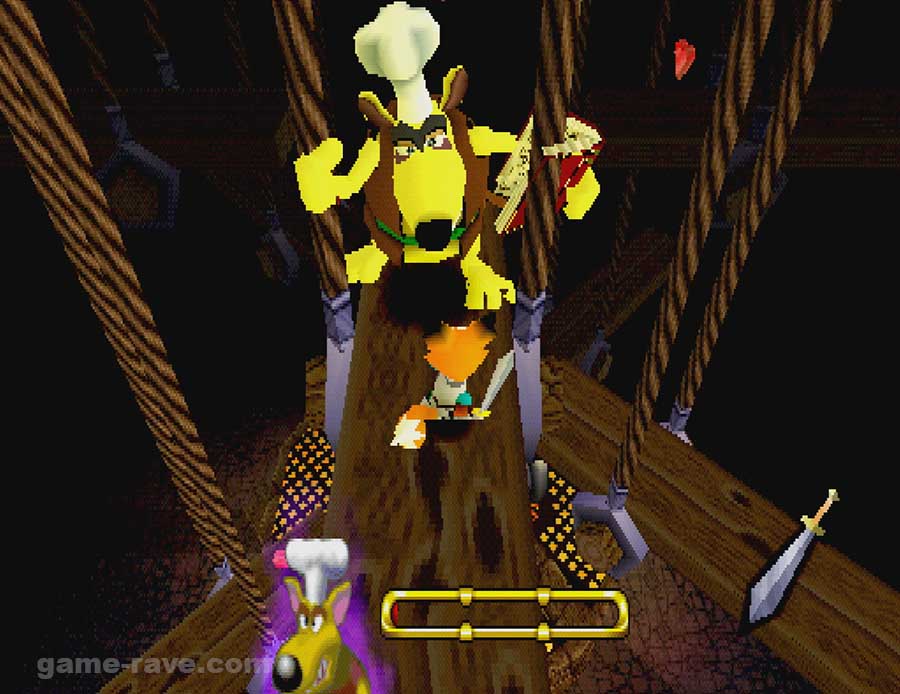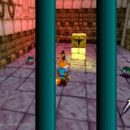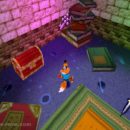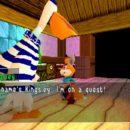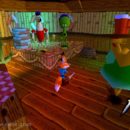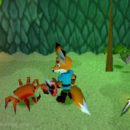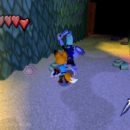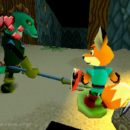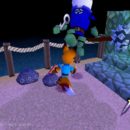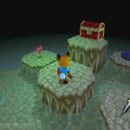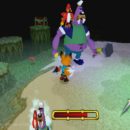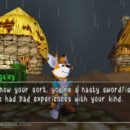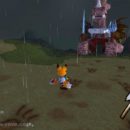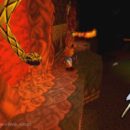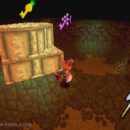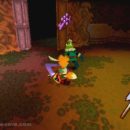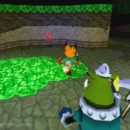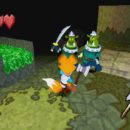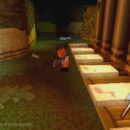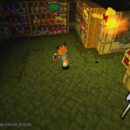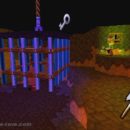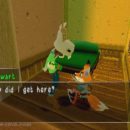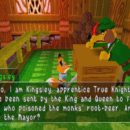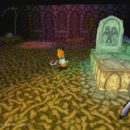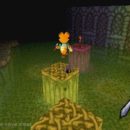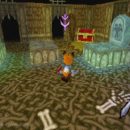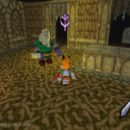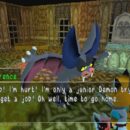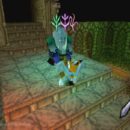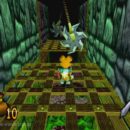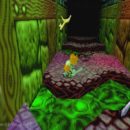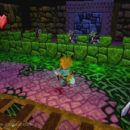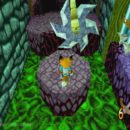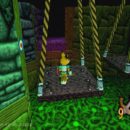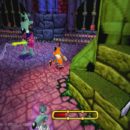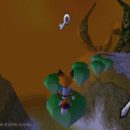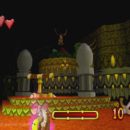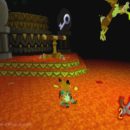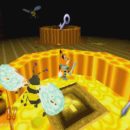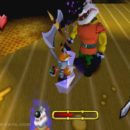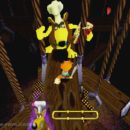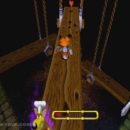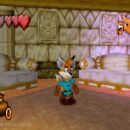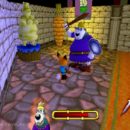| Genre: Action |
CDs: 1 |
|---|---|
| Publisher: Psygnosis |
Released: September 28, 1999 |
| Developer: Psygnosis Camden Studios |
UPC: 7 35009 40242 4 |
| Sony ID: SLUS-00801 |
PSRM: 012730 |
| Players: 1 Player |
Memory: 1 Block |
| Accessories: Analog, Vibration |
|
| ESRB: Everyone – Mild Animated Violence |
|
| Box Copy:
Do What is Right, Join Kingsley’s Quest, to Become a True Knight! This is the story of Kingsley – fox cub, unlikely hero and apprentice True Knight. Are you ready to join his quest to save the Fruit Kingdom from the evil wizard, Bad Custard?
|
|
Variants
- There are no known variants.
Misprints
- There are no known misprints.
Review
Psygonsis is known for a great many things – futuristic race cars, present-day race cars, futuristic ships, and most importantly cute creatures. While I’ll save Lemmings for another day, today’s adorable fluff ball is Kingsley; the title character in Kingsley’s Adventure.
If you missed the previous video, Kingsley’s real-life origins found him to be a rabbit prince in the rabbit kingdom. A design change presented players with an adopted orphan fox in the lands of rabbits and other creatures. It turns out our little buddy wants to be a knight but to do that he’ll need to pass several tests and complete more important quests. These missions will bring him face-to-face with 4 dark knights (not that one) and 4 villainous accomplices to Bad Custard; the fired chef who has stolen the Queen’s book of magic.
Kingsley’s Adventure presents one of the more polished yet oddly not-fully realized worlds the PlayStation can provide. The game is divided into 4 types of levels; the hub-like castle, several villages, main dungeons, and then dark knight (still not that one) arenas. Players will begin in the castle for apprenticeship training and work their way up to the quests from there.
Once set on his missions, Kingsley becomes the adorable equivalent of an RPG character trapped in an action-adventure storyline. As the boss characters are defeated, they’ll relinquish True Knight items that can grant gamers access to the next level. Once into the second stage, players begin to return to previous levels to take on the evil knights in their custom and amusingly themed castles. Once all 8 villains are vanquished, the final battle against Bad Custard arrives and it’s one of the game’s finest moments, but more on that in a bit.
Let’s start with the world. It’s wonderful and cheeky and I wish Psygnosis had done more with both it and the brand. From a gameplay standpoint, there’s far more world in the towns than needs to be, leaving one to question if the title originally started as an actual RPG. There are hills, flowing rivers, lively beaches, as well as dreary rain-soaked areas. The dungeons are decorated in animated lava textures, bubbling acid pools, various moving trap-like elements with plenty more.
I’d like to give a special nod to the creative ways Psynosis illustrated various establishments. A giant barrel provides access to a tavern, while a giant anchor acts as a boss arena dragged in from the lake. Inside houses, you can find bathtubs, bottles, and books strewn about, all providing proof of life in the little slices of villages that exist. There is also plenty of town folk to talk to, but aside from the mission helpers, they don’t have much to say.
Another visual treat is in the lighting accents. Every location is bursting with spots of color – the stage lights of a bar, the ambient glow of the lava. While it looked great in emulation, it looks incredible on a CRT using S-Video cables. If you have the means, use them.
Sound peeps will find a bunch to love in the audio department. Characters talk in a sped-up gibberish akin to Sims games and various Rare characters. Dialogue is cute but there is a hilarious amount of sass to be found when it comes to conquering the boss characters. One of my favorites is when one reveals he was going to turn over a new leaf and get married, have kids, and settle down. Kingsley brushes him off and sends him on his way to the afterlife.
Area and dungeon-related tunes are pleasant to listen to and I never really found myself letting them fade into the background. There’s almost a Saturday-Morning cartoon vibe to it all, and it’s something you rarely see pulled off well.
Kingsley himself is equipped with a jump, attack, sidestep and backflip move set. He can also raise his shield to protect himself from a physical attack, but that ability is where the game starts to fall apart.
You see, there’s no such thing as personal space when it comes to combat. For Kingsley to hit someone, players need to be literally up in their opponent’s face – or waist, with height taken into account. This means unless one is using the ill-fated crossbow they’ll need to learn the block button’s timing. Worse, where they’ll need to stand. The enemies, particularly the larger ones have this uncanny knack for hitting you just right and chopping off your health bar. There were moments in both of my play-throughs where the game couldn’t decide If I was blocking or not, which resulted in a lot of dying and restarting.
Back to the crossbow for a moment. The level designers took a strange approach to this weapon, and that choice ends up breaking the game’s flow. Kingsley can only hold 10 arrows at once – but he can’t replenish them unless he’s completely out. This inability to restock arrows on the fly forces the player to decide between forging on hoping they have enough arrows or standing there next to the respawn firing off the last few so that they can move forward with a full suite of 10 again.
This awkwardness in inventory management when combined with the inconsistent hand-to-hand fights sours the experience ever so slightly. The annoyance becomes more apparent when applied to the game’s unbalanced jump physics. If Kingsley is touched by literally anything, his momentum completely drains, bringing him to an almost stand-still in mid-air. This design rears its ugly head in the abandoned castle stage, where traps and enemies are standing at the edges of each jump location. Players will find themselves consistently missing jumps at an absurd pace, eventually becoming comical.
It’s right about here that one would expect the review to sour out, and you’d be forgiven for thinking so. There’s something about the overall experience that refuses to let the more problematic points take over. On my first completed run, I sat for a moment and realized I didn’t have a clear opinion. In starting the second play-through, more observations come into focus.
Knowing what to expect this time around, I appreciated the little touches and discovering tricks that should have been realized the first time around. For example, it took the 2nd run to discover the column corners in this boss fight can be used to dodge his fire ring. Something I struggled to consistently jump over in the prior game. In areas where I abused save states on the Polymega, I could now see the errors in my control choices on the real hardware. A slippery slope area that took me roughly 40 tries the first time now took me 7 tries.
I commented to someone that I liked the game enough the first time to go at it again. After the second run, I like it enough to want to do a guide for it. Just…not right now.
When it comes down to it, Kingley’s Adventure is a tarnished offering that still shines bright through the smudges. The love and attention given to the world are obvious, with an appreciation for humor and the almost pitch-perfect vibe the game exudes. Yet the feeling that we were denied something greater still lingers after a 2nd run. The edges of the world feel a few feet too far; some of the characters feel like extras who deserve more lines, all tied to an experience that feels shorter than it should be.
With a single exception; the final battle against Bad Custard. Taking place inside a giant boiling kettle, the final moments in the adventure are worthy of any player’s time. As Bad Custard hurls spells and frantically runs around his fortress, players will eventually start working their way up shelves of cookbooks and catwalks, chiseling away at Custard’s health until the final blow finds him cornered. With one final swipe, our furry hero casts the villain into the final cutscene, so many literal and figurative stories below. It’s a perfectly executed level in every facet, and it proves how much the dev team wanted to cram into the compact disc.
In the end, Kingsley’s Adventure scores a 7 out of 10 on Game-Rave’s scale. Kingsley’s parts are worth far more than their sum, and worth revisiting even after you’ve already played it. The sass and cuteness make up for the unrefined combat and jumping issues.
With Psygnosis gone and the characters long abandoned, I truly believe our little fox could find quite the home in the modern world, given half a chance. A voice now long forgotten in a world of Marios and Sonics.
The Good
- Wonderful visual style
- Kingsley’s adorable sass
- Creative locales and backdrops
The Bad
- Weird jump physics
- Awkward close combat
- Takes 2 play-throughs to truly appreciate
Final Score: 7 / 10- SOLID
There are droves of mascot characters on the PlayStation, with many of those voices quietly muted by Spyro and Crash Bandicoot. Kingsley deserves to be heard; he’ll make you smile.
Screenshots
Videos
Kingsley’s Adventures hides a fun in-joke room of discarded game ideas.
Trivia
- Kingsley originally started life out as a rabbit, and his day 1 character model can be seen in-game! You can the video on the Media tab or just jump to Youtube.
- In the same video you can see an unused friend and his evil alter-ego. The friend’s armor emblem looks almost identical to the game’s 1-Up icon. More than likely there would have been a subplot with the friend.
- From the 2nd level onward, the paths are unlocked clockwise from the center of the rabbit castle. This could be a small nod to the white rabbit from Alice in Wonderland, who was always running late and looking at a watch. There’s even a sundial just outside the castle entrance.
- Kingsley has awareness programming. As he walks around, he’ll immediately look up or at the character he can talk to.







